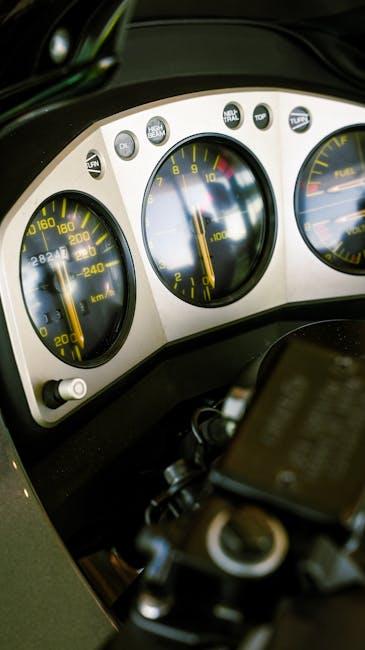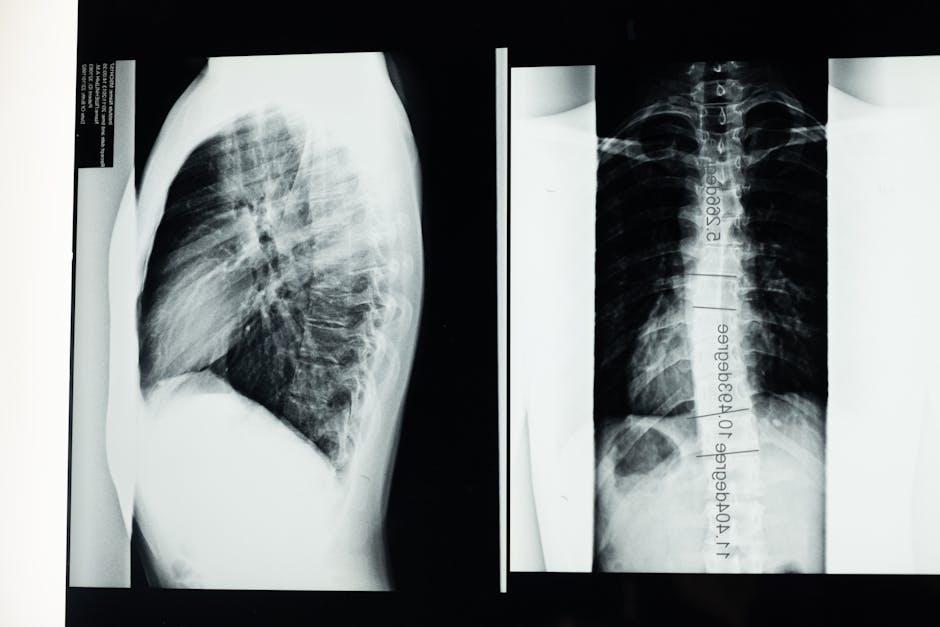In the intricate world of machinery, technology, and even interpersonal dynamics, alignment plays a pivotal role in ensuring harmony and efficiency. Yet, despite our best efforts, alignment issues often creep in—subtle shifts that can cascade into significant problems. But what exactly causes these misalignments? Is it simple wear and tear, external forces, or perhaps something less obvious lurking beneath the surface? Exploring the root causes of alignment issues not only unveils the complexity behind these disruptions but also sheds light on how we can anticipate, prevent, and resolve them before they derail our systems or relationships.
Table of Contents
- Understanding the Fundamentals of Alignment and Its Importance
- Common Mechanical Factors Leading to Misalignment
- The Role of Environmental Conditions in Causing Alignment Problems
- Impact of Wear and Tear on System Precision
- Best Practices for Diagnosing and Preventing Alignment Issues
- Advanced Techniques to Correct and Maintain Proper Alignment
- Q&A
- The Conclusion

Understanding the Fundamentals of Alignment and Its Importance
Alignment issues often stem from a combination of factors that disrupt the natural balance and functionality of mechanical systems or structural components. One of the primary causes is wear and tear over time, where constant usage results in parts gradually shifting out of their intended positions. Environmental conditions such as temperature fluctuations, vibrations, and even improper handling during installation or maintenance can exacerbate these discrepancies. Additionally, manufacturing defects or assembly inaccuracies may lead to initial misalignment, which worsens if left unchecked.
Understanding the root causes helps in effectively preventing and addressing alignment complications. Common contributors include:
- Improper installation procedures that do not follow technical specifications.
- Material fatigue causing warping or deformation.
- Unequal load distribution putting stress on particular components.
- Environmental stressors such as thermal expansion or contraction.
| Cause | Effect on Alignment | Preventive Measure |
|---|---|---|
| Wear and Tear | Gradual mispositioning of parts | Regular maintenance & inspection |
| Vibrations | Increased looseness and misalignment | Shock absorption & proper mounting |
| Improper Installation | Immediate misalignment issues | Following exact installation guidelines |

Common Mechanical Factors Leading to Misalignment
Mechanical misalignment often stems from a variety of subtle yet impactful factors. Over time, wear and tear of machine components such as bearings, bushings, and shafts cause parts to shift from their optimal positions. Even the slightest deformation or erosion can set off a chain reaction, leading to increased vibrations and compromised functionality. Additionally, improper installation or assembly—where bolts are not tightened to exact specifications or mating surfaces are contaminated with debris—can prevent machines from achieving perfect alignment right from the start.
Beyond the immediate machinery, external influences play a significant role. Structural settling or foundation shifts, prevalent in industrial environments, can subtly skew machinery frames. Thermal expansion due to fluctuating operating temperatures also causes parts to expand or contract unevenly, introducing alignment errors. The following table summarizes some of these common mechanical triggers:
| Factor | Impact |
|---|---|
| Component Wear | Causes looseness and imbalance |
| Improper Installation | Initial misalignment during setup |
| Foundation Movement | Shifts base alignment over time |
| Thermal Expansion | Variable dimensional changes |

The Role of Environmental Conditions in Causing Alignment Problems
Environmental factors often play a significant role in the emergence of alignment problems, impacting mechanical systems, digital devices, and even structural components. Variations in temperature cause materials to expand or contract, distorting precise calibrations and leading to misalignment over time. Similarly, excessive moisture or humidity can cause corrosion or material degradation, weakening the integrity of parts that must fit together accurately.
Other environmental stressors such as dust, vibrations, and uneven surfaces can also disrupt alignment by introducing unforeseen shifts or friction. Below is a focused overview of some common culprits:
- Temperature Fluctuations: Expansion and contraction of materials.
- Humidity Levels: Corrosion and swelling of components.
- Dust and Debris: Interference with smooth mechanical function.
- Vibrations and Shocks: Gradual displacement of aligned parts.
| Environmental Factor | Impact on Alignment |
|---|---|
| Heat | Material expansion causing loosened fits |
| Humidity | Swelling or corrosion of adhesion points |
| Vibration | Shifting or loosening of fastened parts |
| Dust | Physical obstruction in alignment mechanisms |

Impact of Wear and Tear on System Precision
Over time, the gradual deterioration of components within a system can lead to noticeable declines in accuracy and alignment. Mechanical parts that frequently move against each other are especially susceptible to friction-induced wear, which can cause slight shifts in positioning. Even microscopic changes in surface texture or material thickness accumulate, eventually affecting the system’s ability to maintain its original precision. Additionally, environmental factors such as dust, moisture, and temperature fluctuations accelerate these effects by introducing corrosion or material expansion.
Several common symptoms appear as wear intensifies:
- Increased vibration or noise during operation
- Visible looseness between interconnected parts
- Erratic or inconsistent performance over time
- Degradations in output quality or product tolerance
| Component | Effect of Wear | Precision Impact |
|---|---|---|
| Bearings | Surface roughening | Misalignment and vibration |
| Shafts | Diameter reduction | Loss of concentricity |
| Seals | Material cracking | Leakage affecting calibration |

Best Practices for Diagnosing and Preventing Alignment Issues
Proper diagnosis begins with a thorough inspection of all relevant components, such as tires, suspension, and steering systems. Using a combination of visual checks and precise measurement tools like alignment gauges can help identify subtle deviations before they escalate into major problems. Establishing a regular maintenance schedule not only saves you from unexpected setbacks but also ensures that any misalignment is caught early. Key steps include:
- Checking tire pressure and wear patterns
- Inspecting suspension bushings and ball joints
- Using computerized alignment systems
- Balancing tires to avoid uneven rotation
Prevention starts with mindful driving habits and environmental awareness—avoid potholes, curbs, and rough terrain whenever possible as these can lead to instant shifts in alignment. Additionally, consider the quality of replacement parts; opting for OEM or high-quality components enhances longevity and reduces the risk of recurring issues. Here’s a quick overview of actions and their benefits:
| Action | Benefit |
|---|---|
| Routine Tire Checks | Extends tire life and prevents uneven wear |
| Professional Alignment Services | Ensures precision and accuracy in adjustments |
| Damage Avoidance | Reduces sudden alignment shifts and costly repairs |
| Use of Quality Parts | Improves system reliability and durability |

Advanced Techniques to Correct and Maintain Proper Alignment
Achieving and preserving proper alignment requires a combination of precise adjustments and ongoing maintenance. Start by incorporating targeted exercises that focus on strengthening weak muscles and stretching tight ones to balance the body’s natural posture. Techniques like proprioceptive training, which enhance your body’s awareness of position and movement, can accelerate correction by teaching the brain to maintain ideal alignment automatically. Additionally, regular use of alignment tools—such as foam rollers, posture correctors, or ergonomic aids—supports structural integrity during daily activities without overstraining muscles.
Consistent assessment is crucial for identifying subtle shifts before they develop into larger problems. A practical approach involves scheduling periodic reviews using methods like digital posture analysis or manual palpation to ensure the spine and joints remain neutral. Below is a simple guide to keep alignment in check at home:
- Daily posture check: Use a mirror or take photos from multiple angles.
- Ergonomic setup: Adjust desk, chair, and screens to prevent forward head or slouching.
- Mindful breaks: Stand, stretch, and realign every 30-45 minutes.
| Technique | Purpose | Frequency |
|---|---|---|
| Foam Rolling | Release muscle tension | 3-4 times/week |
| Proprioceptive Drills | Improve body awareness | Daily |
| Ergonomic Adjustments | Reduce strain | Ongoing |
Q&A
Q&A: What Causes Alignment Issues?
Q1: What exactly are alignment issues?
Alignment issues occur when parts or components that are supposed to line up perfectly are out of sync, causing improper function, uneven wear, or visual distortion.
Q2: What are the common causes of alignment issues?
Several factors can cause alignment problems, including manufacturing defects, mechanical wear and tear, external impacts or shocks, improper installation, and environmental influences like temperature changes or ground shifts.
Q3: How do manufacturing defects contribute to alignment problems?
If parts are produced with slight inaccuracies or tolerances exceed acceptable limits, components may never fit correctly, leading to ongoing alignment challenges.
Q4: Can everyday use cause alignment issues?
Absolutely. Over time, normal use can cause components to loosen, wear unevenly, or shift, gradually leading to misalignment.
Q5: What role do impacts or shocks play in causing misalignment?
Impacts such as drops, collisions, or vibrations can physically knock parts out of place, especially in machinery, vehicles, or structural elements.
Q6: Could improper installation be an underlying cause?
Yes. If components are installed without following precise guidelines or torque specifications, alignment can be off right from the start.
Q7: How might environmental factors influence alignment?
Temperature fluctuations can cause materials to expand or contract unevenly, while shifting foundations or soil settling can physically move structural components out of alignment.
Q8: Are alignment issues always visible?
Not necessarily. Some misalignments are subtle and only detected through performance checks or specialized measurement tools.
Q9: Why is understanding the cause important?
Identifying the root cause helps in choosing the right corrective measures and avoiding recurring problems, ensuring longevity and optimal performance.
Q10: Can alignment issues lead to bigger problems?
If left unaddressed, alignment issues can cause accelerated wear, inefficient operation, safety hazards, or costly repairs down the line.
The Conclusion
In the intricate dance of mechanics and precision, alignment issues often emerge as subtle missteps—sometimes caused by wear and tear, other times born from external forces or initial design flaws. Understanding these underlying causes not only demystifies the problem but also empowers us to take proactive steps in maintenance and repair. As we navigate the complexities of alignment, recognizing its origins is the first stride toward smoother performance and lasting harmony in any system.
